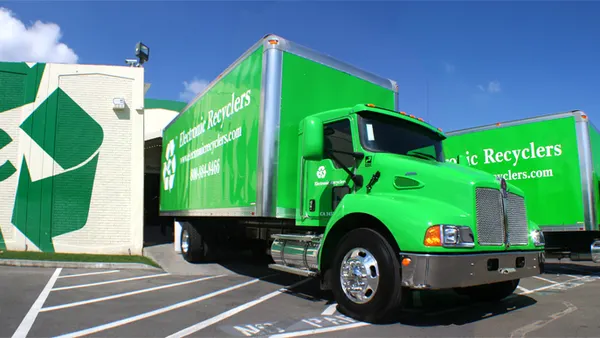Dive Brief:
- A report by BCC Research estimates that the global bioplastics market, which was 1.6 million metric tons in 2015, could surpass 6 million metric tons by 2020.
- The study found a trend toward compounding bio-based plastics with oil-based plastics to create more durable products including cars and phones.
- BCC projects that this will be driven by a 271% increase in production between 2015 and 2020, which will result in bioplastics using .04% of total global agricultural space.
Dive Insight:
This anticipated 30% growth rate is expected to be driven primarily by markets in Asia and the Americas. The current Americas bioplastics market is nearly 800,000 metric tons and could reach 3.4 million metrics tons by 2020. The Asian market currently account for more than 380,000 metric tons and may reach 1.4 million metric tons by 2020.
These figures highlight a trend toward more sustainable packaging, created from bioplastics and other material. Recent innovations include six-pack rings made from spent grain, packaging material made from mushrooms and plastic film made from seaweed. However not everyone is convinced that bioplastics are the most eco-friendly move. In May, the United Nations Environment Programme released a report titled "Marine Plastic Debris and Microplastics" that argued such bioplastics are not necessarily better for oceans than traditional plastics.
According to BCC, a fully biodegradable polymer must be completely converted by microorganisms to carbon dioxide, water and organic matter. As seen in the Boston area recently, where a debate is currently playing out between restaurants and a local hauler, some composting operations can't handle these materials. As the bioplastics market expands, adequate processing infrastructure will be key to making sure products' lifecycles are truly as green as advertised.











